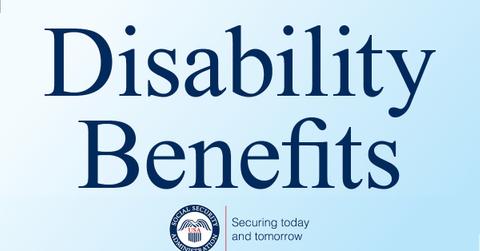When Social Security Disability Benefits Might Become Taxable
Social security disability insurance (SSDI) helps millions of American. Are SSDI benefits taxable?
Jan. 13 2022, Published 3:02 a.m. ET

Social Security Disability Insurance (SSDI) provides assistance to people with disabilities. These benefits are federally funded and administered by the U.S. SSA (Social Security Administration). At the end of 2020, there were 9.7 million Americans receiving benefits from the SSDI program. While these benefits help millions of people in need of assistance, many wonder if social security disability benefits are taxable.
SSDI pays benefits to you and your family if you're insured. To qualify for coverage, you'll need to have worked long and recently enough, paid Social Security taxes on your earnings, and been diagnosed with a medical condition that prevents you from working for at least 12 months or is expected to end in death.
When you apply for SSDI, the SSA will collect medical and other information from you to assess if you meet Social Security’s definition of disabled. The administration will also need updated information about your condition.
Who's eligible for SSDI benefits?
To be eligible for disability benefits, you must:
- Be unable to work because you have a medical condition that's expected to last at least one year or result in death.
- Not have a partial or short-term disability.
- Meet the SSA’s definition of disabled.
- Be younger than your full retirement age.
To find out if you're eligible for benefit programs, check out the SSA's Benefit Eligibility Screening Tool.

Is Social Security Disability taxable?
Whether social security disability benefits are taxable depends on your total income. If you receive SSDI benefits, your total income will be calculated by adding half of your disability benefits to all other sources of income, including tax-exempt interest. This total income should be less than the threshold set by the IRS. For people filing as single, the threshold limit is $25,000, and for those filing jointly as a married couple, the limit is $32,000.
If, however, your income exceeds these limits, there are two tax rates that can apply.
- As a single filer, you may need to include up to 50 percent of your benefits in your taxable income if your income falls between $25,000 and $34,000.
- Up to 85 percent gets included on your tax return if your income exceeds $34,000.
For married couples who file jointly, you’d pay taxes as follows:
- Up to 50 percent of the SSDI benefits you receive when your combined income falls between $32,000 and $44,000.
- Up to 85 percent of your disability benefits if your combined income exceeds $44,000.
State taxes on disability benefits
Most states don't tax social security benefits or disability benefits, but as of 2020, 13 did to some degree. Those states are Colorado, Connecticut, Kansas, Minnesota, Missouri, Montana, Nebraska, New Mexico, North Dakota, Rhode Island, Utah, Vermont, and West Virginia. State policies on taxing benefits vary widely. Other states offer their own deductions or exemptions based on age or income, and a few are reducing or eliminating the taxation of benefits.
Most people who receive Social Security benefits don't have to pay taxes on them, as they have little or no additional income.
